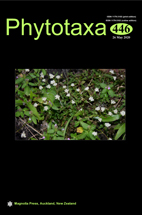Abstract
Amphisphaeria yunnanensis sp. nov. and Lepteutypa qujingensis sp. nov. are introduced in this study from dead twigs collected from an evergreen broadleaf forest area in Yunnan Province, China. Both species have immersed, sub-globose ascomata and overlapping uniseriate asci and multi-guttulate, fusiform, brown ascospores. Amphisphaeria yunnanensis is distinguished among similar taxa in having long and narrow ostiole and comparatively small fusiform ascospores. Lepteutypa qujingensis is characterized by smaller ascomata and ascospores compare to other Lepteutypa species. Based on LSU-ITS phylogeny and macro-micro morphology, both species are placed in Amphisphaeriaceae. Morphological comparisons of the accepted species in Amphisphaeria and Lepteutypa are provided.

